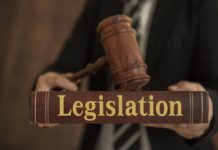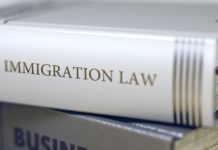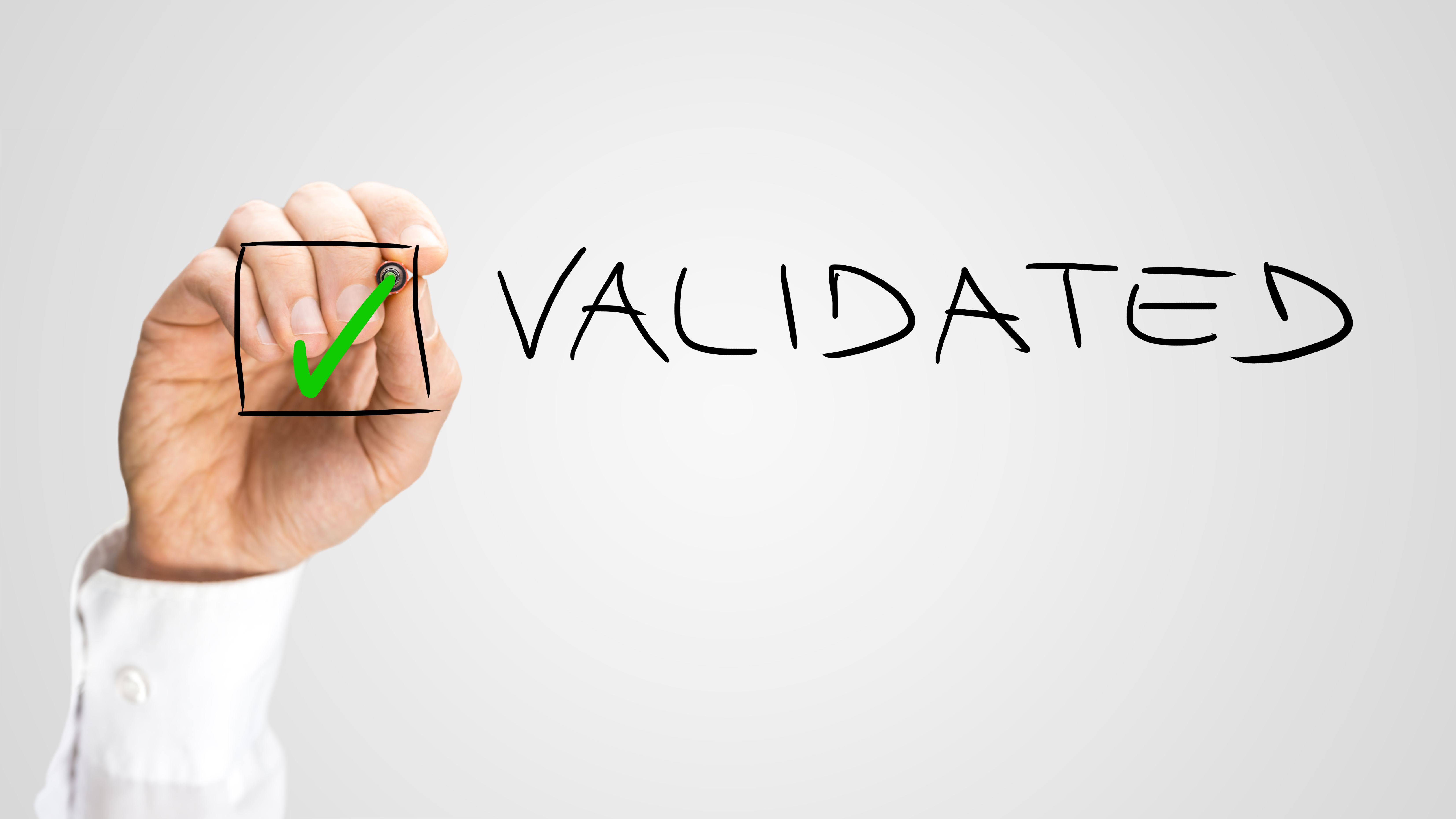Federal Court (Full Court). Is s 46(2) of the Administrative Appeals Tribunal Act 1975 (Cth) which, among other things, requires courts to "do all things necessary to ensure that the matter [the subject of a certificate under s 39B(2)] is not disclosed to any person other than a member of the court as constituted for the purposes of the [judicial review] proceeding" brought under s 44, constitutionally valid?
The Tribunal affirmed an adverse security assessment (ASA) made by the respondent, the Director-General of Security, on behalf of the Australian Security Intelligence Organisation (ASIO). The ASA was relied upon by the Minister for Home Affairs to cancel the Applicant’s visa, which cannot be revoked so long as the ASA remains in place. The Applicant "appealed" the Tribunal's decision to the Federal Court (FCA) under s 44 of the Administrative Appeals Tribunal Act 1975 (Cth) (the AAT Act).
The Full Court of the FCA (FCAFC) heard the "appeal" and described the relevant facts as follows:
70 Certificates were issued by the ASIO Minister in this case under ss 39A(8) and 39B(2)(a) of the AAT Act, on the ground that thedisclosure of the certificated matter would prejudice the security of Australia. As a consequence, the applicant was not entitled to access all of the information that was before the Tribunal and was excluded from parts of the hearing before the Tribunal. TheTribunal was required to “do all things necessary” to prevent disclosure of the matter to any person other than a member of theTribunal as constituted for the purposes of the proceeding: s 39B(3) of the AAT Act. As noted above, this is an appeal pursuant to s 44 of the AAT Act. Notwithstanding the certificates, s 46(1) of the AAT Act required the Tribunal to send all relevant documents to the Court. Where s 46(2) of the AAT Act applies, as it does in this case because the certificates were issued under s 39B(2), the Court “shall … do all things necessary to ensure that the [certificated] matter is not disclosed to any person other than a member of the court as constituted for the purposes of the proceeding”. Accordingly, s 46(2) of the AAT Act operates to prevent the disclosure of the certificated matter to the applicant or to his legal representatives.
Some of the questions to the FCAFC were as follows:
Question 1: Section 501(6)(g) of the Migration Act 1958 (Cth) provided that a person did not pass the character test if that person had been assessed by ASIO to be “directly or indirectly a risk to security” within the meaning of s 4 of the ASIO Act. The Minister could cancel a visa under s 501(3) if "satisfied that the refusal or cancellation is in the national interest". Is not passing the character test for by reason of s 501(6)(g) likely to satisfy the Minister that visa cancellation is in the national interest?
Question 2: If ASIO no longer assesses a person to be directly or indirectly a risk to security, can that person then satisfy s 501(6)(g)?
Question 4: Could the decision to issue the certificate under ss 39A(8) and 39B(2) of the AAT Act have been the subject of an application for judicial review, pursuant to s 39B of the Judiciary Act 1903 (Cth) (Judiciary Act)?
Question 5: Section 46(2) of the AAT Act provided, inter alia, that if a certificate is issued under s 39B(2) of the AAT Act, the FCA shall "do all things necessary to ensure that the matter is not disclosed to any person other than a member of the court as constituted for the purposes of the proceeding". If the answer to Question 4 is "yes", can it be said that s 46(2) "would not have applied in any such proceeding, and the applicant could have sought production of the certificated material using the ordinary processes of the Court, but subject to any successful claim of public interest immunity"?
Question 6: Alternatively to bringing an appeal under s 44 of the AAT Act and an application for judicial review under s 39B of the Judiciary Act, could a challenge "have been mounted in the Tribunal that the certificates were invalid and that accordingly, the procedural consequences of the certificates were not engaged"?
Question 7: If the answer to Question 6 is "yes", would the Tribunal have been required to form a view with respect to such a challenge?
Question 8: If the answer to Question 7 is "yes" and the Tribunal rejected such a challenge, could that rejection have been challenged as part of an appeal on a question of law under s 44 of the AAT Act?
Question 9: If the answer to Questions 6 and 7 are "yes", but neither approach was taken, does the presumption of regularity apply in relation to validity of the certificates?
Question 10: Should the decision in HT v The Queen be "interpreted as prohibiting the Parliament from enacting legislation that moderated the content of procedural fairness, particularly in circumstances where there are counterbalancing national security considerations"?
Question 11: If the answer to Question 10 is "yes", is the question of Constitutional validity of a legislative provision "whether, taken as a whole, the court’s procedures afford procedural fairness and avoid “practical injustice”"?
Question 12: The Applicant was not "entitled to the material he now seeks at the stage at which the administrative decision was made or during the merits review in the Tribunal". That said, does the fact that "there is no party moving this Court in this case to have an order made which affects or alters the rights or interests of a person, on the basis of evidence which is not revealed to the applicant because of public interest and national security issues" point to the validity of s 46(2) of the AAT Act?
Question 13: Can Parliament "validly legislate to exclude or modify the rules of procedural fairness"?
Question 14: Can it be said that "it is permissible for a State legislature to confer non-judicial functions on a State court, and such functions may call for the adoption of procedures that are more flexible than those required for the exercise of judicial power", with the result that caution should be exercised before relying on decisions applying the Kable doctrine for the assessment of the Constitutional validity of s 46(2)?
Question 15: If the answer to Question 14 is "yes", does it follow that "there are two standards of justice or different standards of justice between the Federal and State courts"?
Question 16: Does Parliament "have the capacity to create a legislative regime with the consequence that a court has access to information but the affected person does not, without such a regime necessarily, for that fact alone"?
Question 17: Can it be said that "the arguments advanced in Graham in respect to the position of the applicant’s access to the material must necessarily have been rejected"?
Question 18: Does Graham support the proposition that "Ch III does not assign to the Courts alone the question of balancing competing interests in a context such as national security"?
Question 19: Can it be said that, "to the extent that Gageler J is said to be expressing an absolute position in Pompano at [177], [188], that approach cannot be reconciled with cases such as Gypsy Jokers or Graham"?
Question 20: Can it be said that, "in assessing the validity of s 46(2) and whether there is practical injustice, the Court does so against the background of the legislative scheme, but is also entitled to consider the counterfactual situation", namely "that given the nature of the material there would almost certainly be cases where a claim for public interest immunity would succeed, and if it did, the consequences that flowed from that"?
Question 21: Does s 46(2) of the AAT Act "ensure that the material before the Tribunal is before the Court"?
Question 22: Can it be said that the Court can take the material not disclosed to the subject of an ASIO assessment by reason of a certificate under ss 39A(8) and 39B(2) of the AAT Act "into account in considering the appeal, albeit without submissions on it from the appellant, he or she having not seen the material"?
Question 23: In respect to any submissions on the material by the Director General of Security, either in writing or orally in closed court, is it to be "expected that the obligations of the type that apply in ex parte hearings, in addition to the respondent’s model litigant obligations, would apply"?
Question 24: In the absence of s 46(2) of the AAT Act, would the material before the decision-maker not be before the Court on any appeal?
Question 25: If the answer to Question 24 is "yes", can it be said that "such material could be the subject of a subpoena, but inevitably there would be a public interest immunity claim and where those claims are made and supported by cogent material, the claim would ordinarily or likely succeed"?
Question 26: Can it be said that "an appellant having appealed by way of s 44 [of the AAT Act] from the decision of the Tribunal has suffered a practical injustice such that s 46(2) is invalid"?
Question 27: Can it be said that, "where an ASA affects migration status, the judicial review of Tribunal proceedings concerning an ASA decision will entail a close examination of the decision, with there being less scope for a beneficial reading of the reasons given"?
Question 28: Was "ASIO’s function in preparing the ASA ... concerned with the prescribed administrative action of the Minister in considering cancellation of the applicant’s visa under the Migration Act, rather than being some more abstract exercise"?
Question 29: Can it be said that, "while there are circumstances where dictionary definitions can be referred to in the process of interpreting a provision, a dictionary is not to be regarded as a fortress"?
Question 30: Does the term "directly or indirectly a risk to security (within the meaning of section 4 of the Australian Security Intelligence Organisation Act 1979)" within s 501(6)(g) of the Migration Act require the Tribunal to identify "a chance of some specific future overt act by the applicant, even by an act of supporting the action of another, so as to make him such a risk"?
Question 31: What was the content of the Tribunal's obligation to give reasons and make findings in relation to the ASA?
The FCAFC answered those questions as follows:
The remainder of this article is only available to Case Law and Platinum subscribers.
Read our Terms & Conditions and upgrade below:
Monthly Subscriptions
Annual Subscriptions
Where GST applies, the above amounts are inclusive of GST.
Content Types
Basic Content includes basic news, some media articles and selected announcements.
Premium Content includes all our content, except for Case Law Content. In other words, it includes Basic Content, plus all our articles on legislative and policy changes, industry updates and the Migration Legislation Tracker.
Case Law Content includes Basic Content, plus case law summaries, analysis and extract, but does not include Premium Content.
Platinum Content includes Basic Content, plus Premium Content, plus Case Law Content. In other words, it includes ALL our content.
If you already have a Case Law or Platinum subscription, click on 'Login' below.











